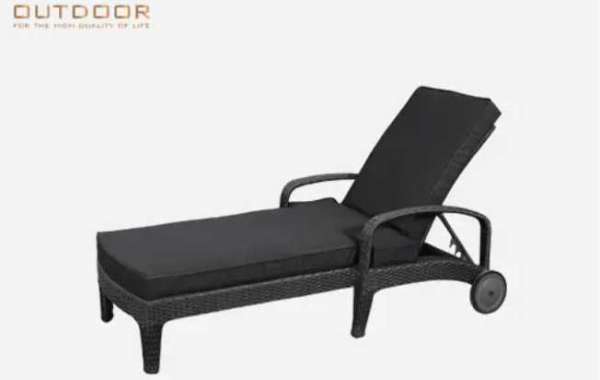As the leaves start changing colors, it’s time to start thinking about winterizing your outdoor furniture Wholesale. Cold weather, freezing rain, and snow all affect your outdoor chairs, tables, fire pits, and more. Prep now so everything is ready to go when the warm weather is back.
Can I Leave my Patio Furniture Outside in the Winter?
Yes! Patio furniture is designed to be outdoors. However, fall and winter weather can damage your furniture if you don’t take the proper precautions. Always clean and apply protective sealants to your furniture before storing or covering it for winter. While it may take a bit of time now, you won’t regret it when it's springtime. Plus, protecting your outdoor furniture during the winter will save you money. Patio furniture sets are expensive and leaving one unprotected during just one bad snowstorm can cause irreversible damage.
How to Prepare Outdoor Furniture for Winter Storage
The first thing you need to do is clean your furniture. What method you use depends on the type of material your furniture is made of. Use the guides below to learn how to properly clean your patio furniture based on material type.
Wood Furniture (Not Teak)
Moisture is the biggest enemy of wood furniture. If left unsealed, moisture will seep into the cracks and ridges. When the temperature drops, the moisture will freeze which can cause the wood to crack. You can prevent this with furniture oil and protective sealants.
Before applying any sealants, thoroughly clean your furniture. Mix warm water and a couple drops of an oil-based soap. Gently scrub with a soft brush or rag in the direction of the wood grain to avoid scratching it.
Fight tough stains with:
1 cup of ammonia
1/2 cup of vinegar
1/4 cup of baking soda
1 gallon of warm water
Use a soft brush to scrub the stain and rinse. Avoid getting it too wet (don’t use a hose) so it has time to dry completely before storage. Dry with a towel or allow to air dry.
After the furniture is dry, complete any sanding, painting, or staining. Do this now so in spring you can focus on enjoying your time outside instead of refinishing your furniture.
Rub a furniture oil onto the surface to keep the furniture from splitting or getting brittle. This is especially important if you live in an area with cold, dry winters. Apply a sealant to prevent moisture from seeping into the wood. In the North, this water will freeze and may crack your furniture. In the South, it could cause mold and mildew. Sealants will also protect from fungi and parasites to help make your furniture last for years.
Teak Furniture
Teak is a beautiful wood for outdoor furniture but requires some extra care. While it is a more weather-resistant and durable wood, it tends to attract mold and mildew due to containing more natural oils than other woods.
To clean, combine:
1 cup of vinegar
1 gallon of warm water
For tougher stains, use the following mixture:
1/4 cup of bleach
3/4 cup of a mild laundry detergent
1 gallon of warm water
Use a soft brush to scrub the wood. Allow it to sit on the wood for 15 minutes and then rinse. Dry with a towel or allow to air dry. If your furniture was left outside unprotected for a long time, you may need to use a more concentrated store-bought cleaning solution. After the furniture is dry, apply Linseed or Tung oil.
Plastic Furniture
Freezing temperatures will make plastic furniture brittle. Repeated changes in temperature will wear down the integrity of the plastic, causing cracking and breaking.
Rinse off your plastic furniture with a hose. Mix ¼ cup of a mild laundry detergent in a gallon of warm water. Scrub the furniture with a soft brush or sponge. Rinse and leave to dry before storing.
Wicker Furniture
Check to see if your wicker furniture is natural rattan or synthetic (also called resin wicker). Natural wicker furniture will chip over time and needs extra care when washing. Wash true rattan as infrequently as possible to avoid splintering.
To clean natural wicker, mix together a few drops of mild oil-based soap in a gallon of warm water. Dampen a soft cloth and gently scrub. Use a spray bottle to lightly mist your furniture to rinse the soap off. Dry immediately with a soft towel or place in the sun to air dry.
Synthetic or resin wicker usually has UV and weather-resistant coatings to make it more durable. If your furniture isn’t very dirty, simply spray it down with a hose and let it dry. Use the same mixture as for authentic wicker furniture if spraying it down isn’t enough. Dry completely with a towel or place in the sun to air dry.
Aluminum Furniture
Aluminum is nearly rustproof, so rain itself won’t cause too many issues. However, most aluminum patio furniture frames including holes to help drain water, but these also let water in. As winter temperatures fluctuate above and below freezing, the water will freeze and melt, potentially weakening the frames. Be sure your aluminum furniture is completely dry before storage to avoid this.
Scrub your furniture with a few drops of a mild laundry detergent and warm water. After drying, look for any scratches and touch them up with paint as needed. You can also apply a coat of car wax for extra protection.
Wrought Iron Furniture
Wrought iron tends to rust, so it should not be left exposed during winter. Some iron furniture sets have a rust-resistant coating. However, bird droppings can damage the coating due to their acidic properties. Wash off any droppings as soon as you see them.
Before cleaning your furniture for winter, use fine-grit sandpaper to remove any rust. Wipe it clean with a mixture of mild soap and warm water. Touch up any paint scratches after letting the furniture dry. You can also treat your furniture with a rust-neutralizer and then apply a thin coat of car wax for extra protection.
We offer garden rope sofa set for sale, Welcome to consult.







